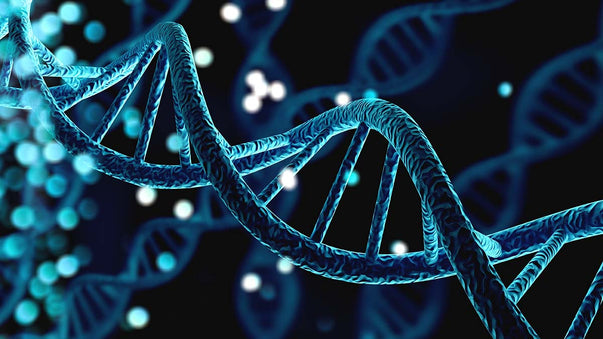Protein Tags Reveal Nanoscale Machinery of Life

Researchers at the University of Washington and Microsoft have created genetically encoded reporter proteins. They can be directly read by a commercially available nanopore sensing device. This may revolutionize access to nanoscale information from the body.
"This is a fundamentally new interface between cells and computers," said senior researcher Jeff Nivala.
The researchers have built a system called "NanoporeTERs" (Nanopore-addressable protein Tags Engineered as Reporters). It can detect multiple protein expression levels from bacterial and human cell cultures far beyond the capacity of existing techniques.
The system acts as a "nanopore-tal." That's a portal based on nanopores. Nanopores are nano-scale holes that can be embedded in electronic devices to capture molecules and perform precise molecular analyses. NanoporeTERs are able to probe what happens inside complex biological systems.
"NanoporeTERs offer a new and richer lexicon for engineered cells to express themselves and shed new light on the factors they are designed to track. They can tell us a lot more about what is happening in their environment all at once," said researcher Nicolas Cardozo. "We're essentially making it possible for these cells to 'talk' to computers about what's happening in their surroundings at a new level of detail, scale and efficiency that will enable deeper analysis than what we could do before."
A paper is published in Nature Biotechnology. Researchers explain that NanoporeTERs were designed to carry distinct protein "barcodes" composed of strings of amino acids. The NanoporeTERs have been engineered with charged "tails" so that they can be pulled into a nanopore sensor by an electric field. And they can be collected and analyzed using a commercially available nanopore device.
"This is the first paper to show how a commercial nanopore sensor device can be repurposed for applications other than the DNA and RNA sequencing for which they were originally designed," said researcher Kathryn Doroschak. "This is exciting as a precursor for nanopore technology becoming more accessible and ubiquitous in the future. You can already plug a nanopore device into your cell phone. I could envision someday having a choice of 'molecular apps' that will be relatively inexpensive and widely available outside of traditional genomics."
"We are currently working to scale up the number of NanoporeTERs to hundreds, thousands, maybe even millions more," said researcher Karen Zhang. "The more we have, the more things we can track."
"We're particularly excited about the potential in single-cell proteomics, but this could also be a game-changer in terms of our ability to do multiplexed biosensing to diagnose disease and even target therapeutics to specific areas inside the body. And debugging complicated genetic circuit designs would become a whole lot easier and much less time-consuming if we could measure the performance of all the components in parallel instead of by trial and error.”
In simple words, my explanation of this development goes like this. Doctors will be able to rapidly and cheaply acquire a hell of a lot of information on whatever molecular processes are going on in your body. Perhaps you’ll be able to do it yourself with smartphone apps. And perhaps this technology will be combined with precise therapies.
More Articles
Don't miss a beat! In our Pulse Newsletter, Thrivous curates the most important news on health science and human enhancement, so you can stay informed without wasting time on hype and trivia. It's part of the free Thrivous newsletter. Subscribe now to receive email about human enhancement, nootropics, and geroprotectors, as well as company news and deals.
Read more articles at Thrivous, the human enhancement company. You can browse recent articles in Thrivous Views. See other Pulse Newsletter articles. Or check out an article below.
-
Alpha GPC Enhances Motivation and Increases Dopamine
Researchers investigated changes in the subjective feelings of healthy volunteers after administering Alpha GPC. Alpha GPC is a natural choline compound ...
-
SEND Delivery System for Gene Therapy
Researchers at MIT and Howard Hughes Medical Institute have developed a new way to deliver molecular therapies to cells. The ...


